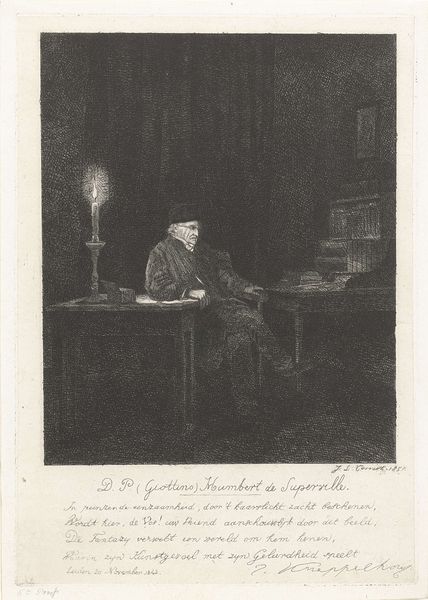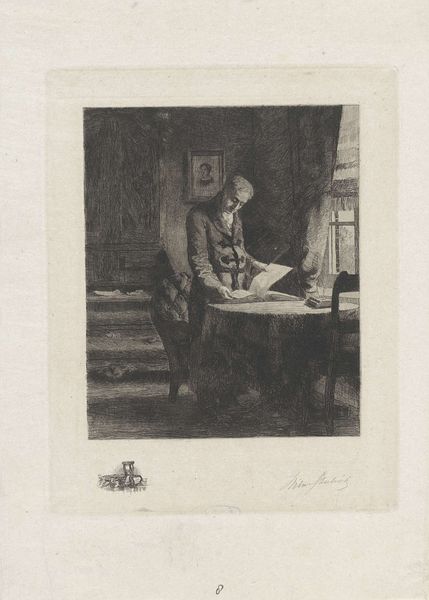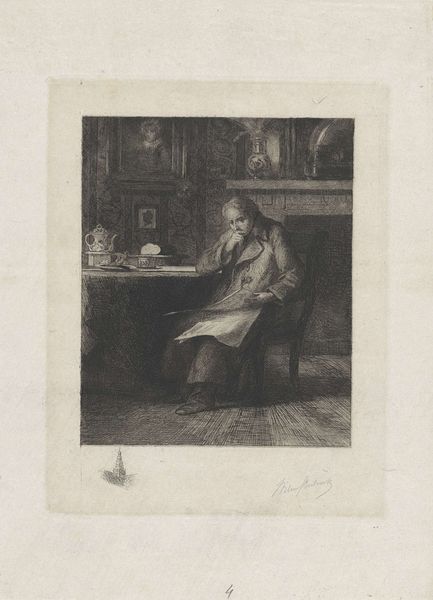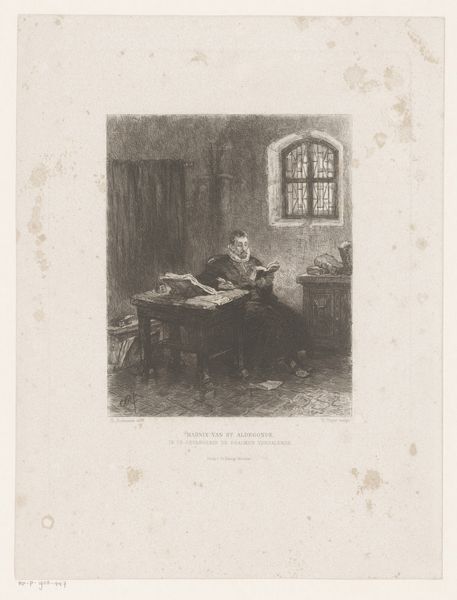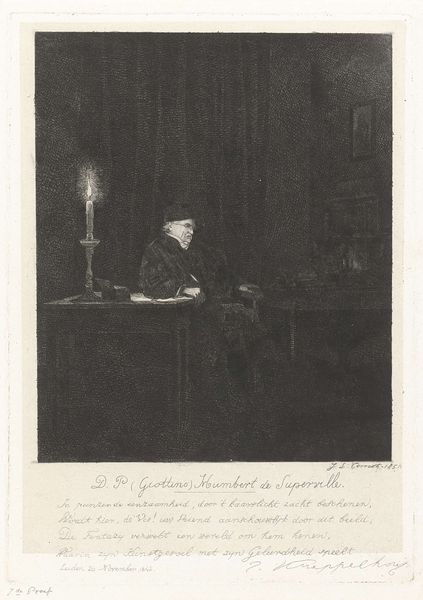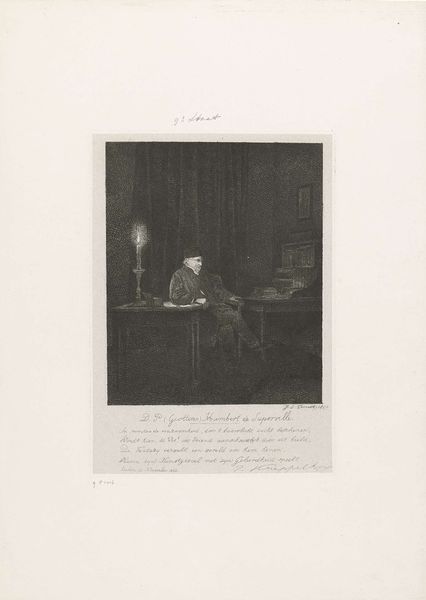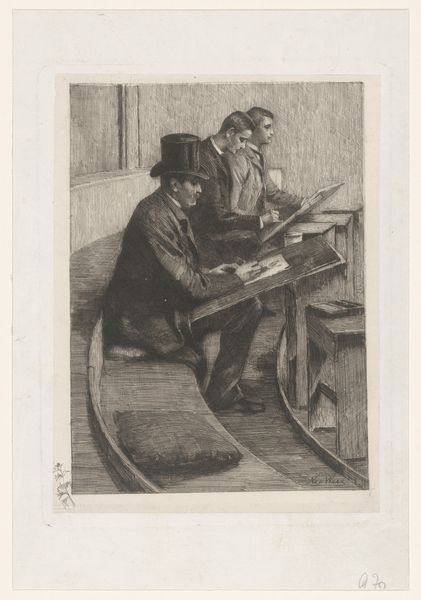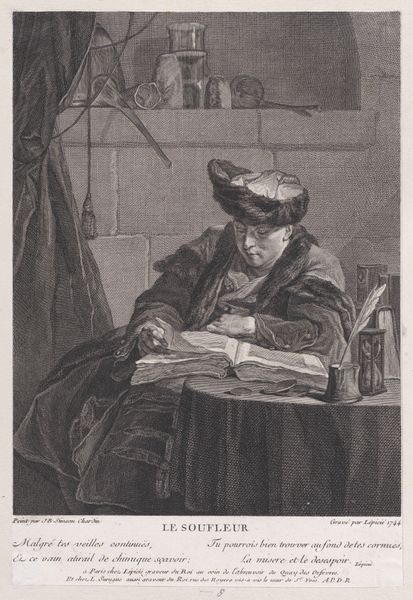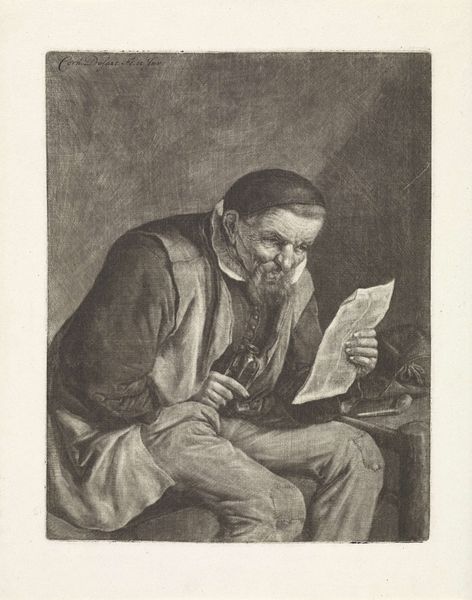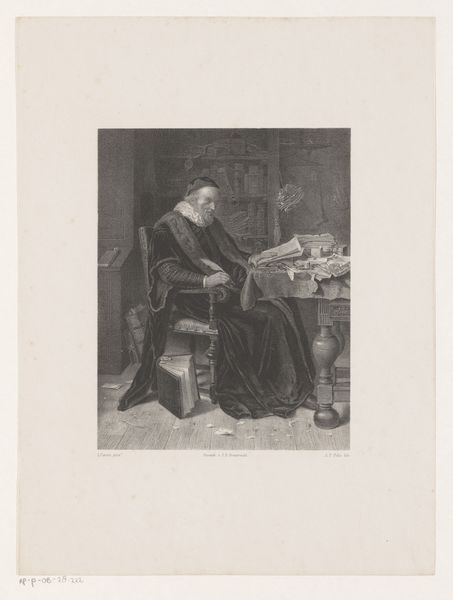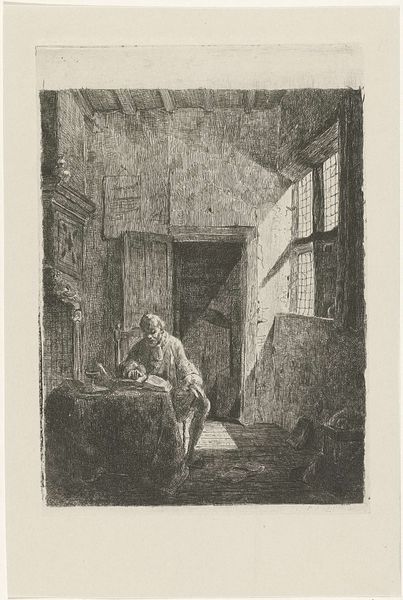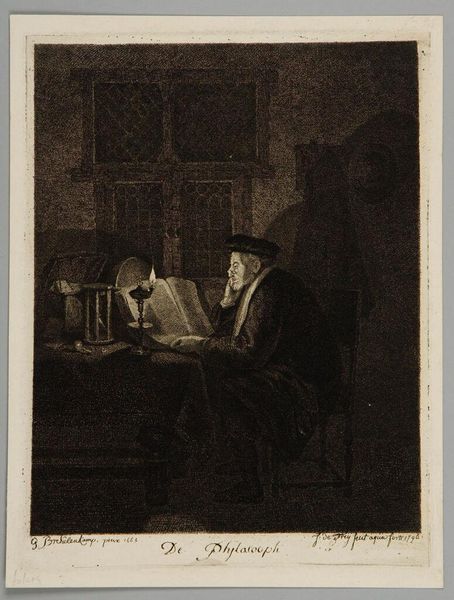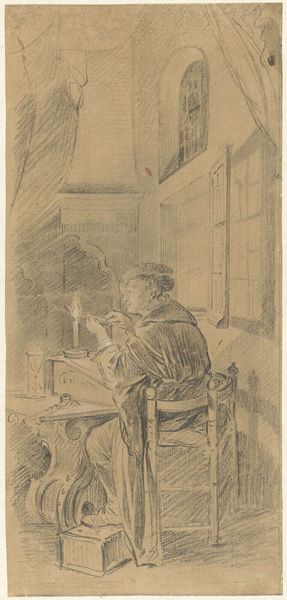
print, etching
#
portrait
#
pencil drawn
# print
#
etching
#
old engraving style
#
genre-painting
#
realism
Dimensions: width 176 mm, height 248 mm
Copyright: Rijks Museum: Open Domain
Curator: Here we have Jacobus Ludovicus Cornet’s “Portret van Humbert de Superville,” created in 1851. It’s an etching, currently held here at the Rijksmuseum. Editor: Immediately, I'm struck by the use of light and shadow, and the contrast, it lends the piece an air of somber intensity and mystery. Curator: The etching technique itself—the physical labor of creating such fine lines—speaks volumes. Consider the social context: prints made art accessible. Who was this Humbert de Superville and how was his likeness consumed? Etchings democratized art, but also reproduced social hierarchies. Editor: Absolutely. And formal elements underscore this point. The lines build to a focal point, primarily around the figure's face, highlighting the subject's character or perceived importance. The texture—so crucial with etching— adds richness. How would you read the artist's intention with his choice of etching and what can be understood of its reception? Curator: That is fascinating when you think about its function within a print market, though. We could spend a lot of time asking how a proliferation of his image through printed matter supported both an economic model and reinforced societal power structures of the period. Were these prints available to be purchased in the shop down the road? Editor: Undoubtedly the texture enhances its gravitas, lending both volume and character. Consider the depth produced via varied densities of lines – the artist's hand has deftly animated this interior scene through gradations and tone. I sense a carefully calibrated composition intended to produce a visual narrative. Curator: Let's not forget the material cost, though. Etching involves acids, metal plates… This art isn’t magically born, it is created. Each choice speaks to social conditions for producing and distributing artwork. Editor: Precisely, the materiality infuses its aesthetic. When light plays off the etching it offers visual interest. Its structural forms allow for a story to take shape, wouldn't you say? Curator: From that perspective, each of our ways of seeing adds another vital piece. Understanding both social history and the formal components enrich our perception greatly. Editor: Agreed, exploring materiality through light, shadow and artistic structure builds our own interpretation, one informed by thoughtful contemplation.
Comments
No comments
Be the first to comment and join the conversation on the ultimate creative platform.
